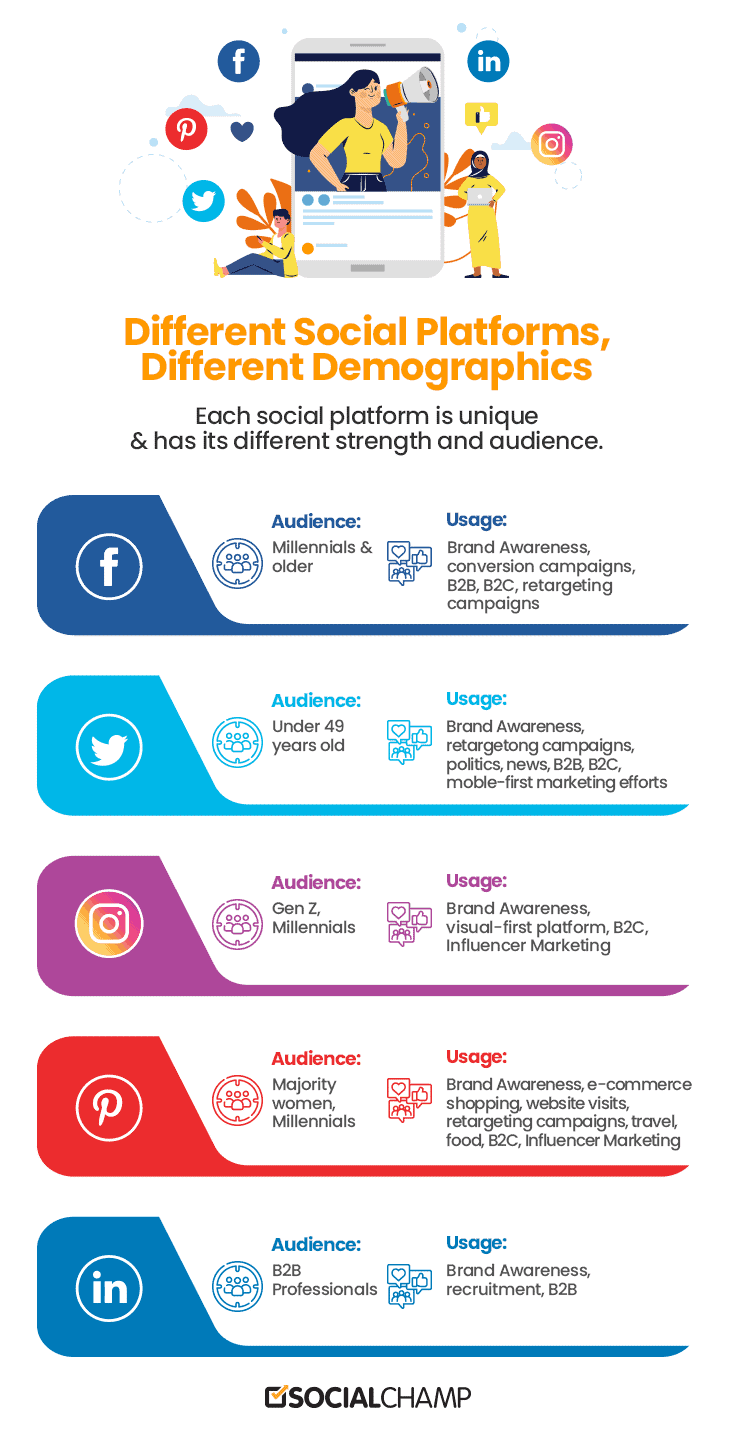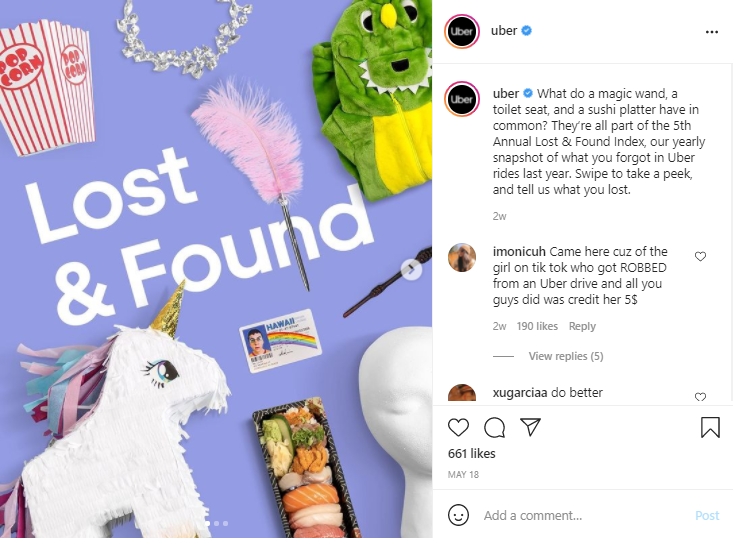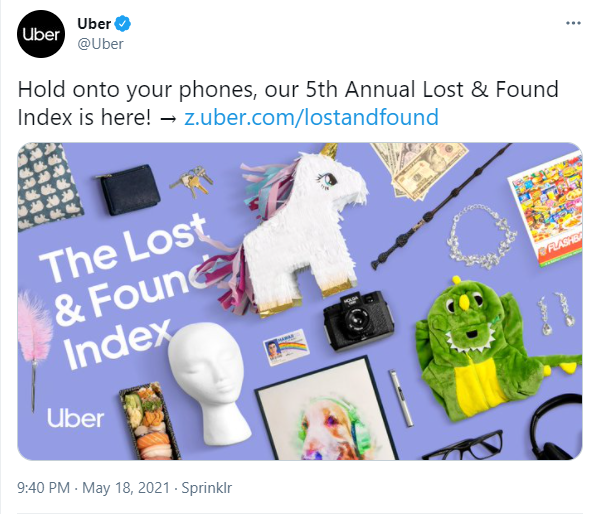If you manage social media accounts, I am sure you are familiar with the following scenarios:
- You have multiple Facebook pages, and you wish to reuse an interesting infographic across all the pages.
- You have a major product announcement that you need to post across all the official social media accounts, including Facebook, Twitter, LinkedIn, and Instagram.
Both these scenarios are based on the idea of cross posting, the practice of posting identical content across multiple social media pages and accounts.
When it comes to cross posting, there are always questions such as:
- Does it work?
- Is cross posting the same content on multiple social networks a good practice?
Let’s find out all the answers in this blog.
What is Cross Posting?
Posting content on multiple social media profiles or pages is one of the most time-consuming tasks for content or social media managers. Many resorts to copy-pasting the same content, complete with links, emoji, and hashtags. While this saves time in content creation, logging into multiple accounts, composing, and publishing still require a good portion of your time.
But is Cross Posting the Same Content a Good Practice?
Suppose you’re a trainer. Posting the same content on all social networks is like giving the same advice in the same tone to all your clients.
Clients have different personalities, goals in life, and learning capacities. So while your advice might be similar for all of them, the words and tone you choose will depend on the client you’re talking to.
Likewise, social networks also have different personalities. Each has a different algorithm, audiences, and how the users communicate. That’s why you shouldn’t have a one-size-fits-all approach for multiple social networks.
Now, if you’re a social media manager, you are probably wondering right now that creating engaging social media content is hard enough already. Now you’re saying not to cross-post the same content on multiple social networks?

All social media platforms are not the same. The algorithm, best practices, audience, caption lengths, image formatting, and even the vocabulary vary from platform to platform. As you probably know, you can’t use the same tone, visuals, hashtags & the overall formatting of an Instagram post on LinkedIn.
If you wish to have a genuine connection with your followers on a specific social media network, make sure your content ticks off all the right boxes. This means your content should be easy to consume on the platform and encourages users to express their views.
It might look like you’re saving time by cross posting the same content on all social networks, but you would be losing the respect and attention of your audience. If you don’t care about what you’re posting, why should they bother reading and engaging with it?
What Should You Do Instead of Cross Posting the Same Content?
So, now what?
Should you stop posting content regularly on all your social networks?
Should you create a new post for all social networks?
Consistency is the key to success, so you shouldn’t stop posting regularly. However, instead of posting the same content word-to-word on all social networks, you can customize each post according to the platform. You don’t need to start from scratch, and a few edits here & there are all that’s required to finalize content for each network. More importantly, you do not have to waste time rethinking what to post. Essentially, the message remains the same, while the formatting and presentation of the visuals and other post elements change to fit the guidelines.
Here is an intelligent example of cross posting from Uber that required minimum effort.
 They made minor tweaks in the caption and image formatting of the content. As you can see, the content on Instagram & Twitter is similar but not identical.
They made minor tweaks in the caption and image formatting of the content. As you can see, the content on Instagram & Twitter is similar but not identical.

What are the Best Practices to Follow While Cross Posting Across Multiple Social Networks?
Here are some of the best practices you can follow to optimize your content with minimum effort before posting on multiple social networks:
Image Formatting
Each social media network has a different rule for visual content. To avoid any awkward image stretching or pixelation, you need to follow the guidelines so that the professional-looking feed encourages engagement.
Whether it’s a video, meme, trend, news update, or blog post share, ask your design team to create several versions, each following the recommended image dimensions for the target social networks. Many image editors offer social media platform-specific templates that resize your images to the required dimensions.
Caption Length
Each social media network has a different caption length. For instance, Facebook allows a post to run for 60K characters, while Twitter has a strict limit of 280 characters. On top of this, these character limits are constantly changing, and it might be a little difficult to keep up. A tool such as Social Champ’s Content Composer takes care of these limitations without hampering post creation. Posts of ideal length can increase shares and engagement. According to BuzzSumo’s research, people like to engage more with shorter and concise posts.
Best Time to Post
Is 10 AM ideal for posting on both Facebook and Twitter?
Honestly, no.
Even if you’re cross posting your social media content, you shouldn’t post it simultaneously on multiple social networks. The perfect timing to post is when your followers are most active.
In terms of the best time to post, the best practice is to use a scheduling tool that allows you to finetune the time for each post. You can use something like Social Champ to schedule your post your content at the optimal time.
Appropriate Headline
Whether it’s Twitter or LinkedIn, the headline or the start of the post matters a lot. While scrolling, it is often the first (in some cases, the only) part visible to the users. As such, a strong start that clearly delivers the message is essential for generating engagement.
Watch out for Hashtags
Not all hashtags work at every platform, and this is one of the major mistakes people make when cross posting content. It is always a good practice to research and add hashtags right from within the platform. This research also ensures that you can tap the latest trending hashtags and do not miss out on a great marketing opportunity.
Optimize CTA For Impact
Many people focus too much on the visuals and overlook CTA. As a result, they do not see much engagement and traffic from social media on their landing pages. Ideally, you should include a CTA in the lower half of the post to make sure the user clicks through to your offer or landing page.
How to Craft a Unique Post for Multiple Social Networks with Minimum Effort?
A simple & smart way is to use a social media scheduling tool like Social Champ.
Why Social Champ?
Well, there are many reasons to use Social Champ. Apart from the fact that it has an easy-to-use user interface and offers great customer support for everyone. It can also help you craft a unique post for each social network with minimum effort.
Write Perfect Length Social Media Posts
Use Social Champ’s Customized Content Composer to create and schedule content with the optimal length for every social network.
How’s That?
Using Social Champ’s Content Composer, you can tweak your content according to the ideal length of each social network.
Not only that, you can design your post just the way you want, thanks to in-app integrations of editing tools like Canva & Crello & Video Editor Wave.Video. As a result, you can connect your accounts and directly use these apps in the Composer.
Once your social media calendar is ready, Social Champ takes care of the rest. The crafting, editing, designing & scheduling of the posts are all be done from one tab. You can add hashtags from the hashtag manager. If you have a frequently used set of hashtags, create and save the set for later use.
What’s More?
You can schedule your posts according to the optimal timing of each social network. What’s even better is that you can create a folder of all your social media posts to recycle them later. Now you can quickly redeploy campaigns without worrying about content creation.
Social Champ also provides a detailed post analytics feature, which helps you track the performance of your posts. By looking at the numbers, you can have a great idea of when your audience interacts with your content. These insights can help you refine your strategy and posting schedule. In addition, you can download PDF reports & refine your social media strategy & decisions according to the numbers & results.
Wrapping Up
Cross posting, when used correctly, could add significant improvements to your social media presence. In addition to saving time, you could reduce the time required to create and deploy content to all your social media channels. For this, you need to use a social media scheduling tool that takes care of all the hassles of creating and scheduling content.














